David Smith was starting to notice his hair thinning, and started talking about it with a friend who was also lamenting his newfound lack of hair. Shortly after that, Smith’s friend seemed to have solved the problem. He’d asked his healthcare provider for a prescription for Propecia (finasteride).
“I was hesitant to try [finasteride] because I was unsure about the potential side effects of propecia. However, after seeing some great results he had, I decided to go for it,” says Smith. A few months after starting the prescription, he started to appreciate a little more hair on his head. He also saw a little more acne, which he was able to manage with a new skin regimen.
Finasteride has been on the market for hair loss since 1997, and many men have boasted positive results, though others have come forward over the years reporting harrowing side effects from erectile dysfunction to suicidal behaviors. On AskAPatient.com, male patients say they’ve grown breasts, had extreme mood changes, and more. Several referred to their lives being “ruined” by the drug. Here’s what you need to know about taking finasteride for hair loss.
What Is Propecia?
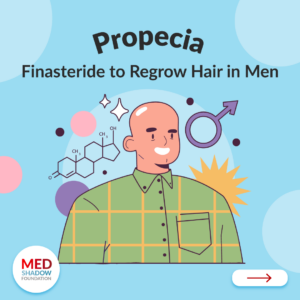
Propecia is the brand name of a drug called finasteride. It’s an FDA-approved prescription pill that you swallow to reduce male-pattern hair loss or to treat an enlarged prostate. Finasteride is also added to topical creams and sprays that you can apply to your scalp in hopes of holding on to your hair. Though topical finasteride is not approved by the FDA, you may see companies skirting around this fact by marketing their creams and sprays as including “FDA-approved ingredients,” since the drug is approved as a pill.
Finasteride prevents your body from converting testosterone to dihydrotestosterone (DHT). Men with hair loss tend to have more DHT in their scalps; lowering the amount of this hormone thus reduces hair loss. The drug also lowers the level DHT circulating in your blood, and can raise the levels of both testosterone and estradiol slightly, according to the FDA.
Causes of Hair Loss
There are many causes of hair loss, also known as alopecia. Male-pattern hair loss is typically caused by genetics and hormonal changes associated with aging. On its own, male-pattern hair loss won’t affect your overall health, but it can impact your self esteem. Many men and women experience hair thinning and loss as they age.
For men, the hair at the front, closest to their foreheads starts thinning first. Over time, the hairline moves backwards, and often creates an “M” shape. Some also experience a growing circle of thin hair at the top of the scalp.
Women tend to experience thinning all over their scalps. They may notice that they can see more of their scalp when they part their hair. Both male- and female-pattern hair loss associated with aging are called androgenic alopecia.
If your hair loss doesn’t follow one of these two patterns, it may be caused by other conditions or be a side effect of medication. If you lose chunks of hair from different areas around your scalp, for example, you should discuss it with your healthcare provider.
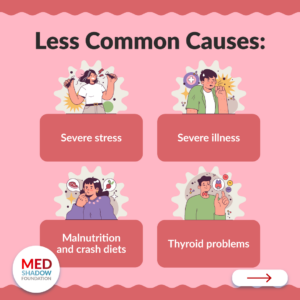
Aside from aging, hair loss can be caused by:
- Alopecia areata, an autoimmune condition
- Traction alopecia, hair loss caused by pulling the hair tightly to style it
- Hormonal changes associated with pregnancy or menopause
- Severe stress
- Severe illness
- Malnutrition and crash diets
- Thyroid problems
Hair loss can also be a side effect of many medications including:
- Chemotherapy
- Isotretinoin, an acne medication
- Antidepressants
- Valproic acid, an antiseizure drug
- Weight loss drugs
- Methotrexate, used to treat a variety of autoimmune conditions such as rheumatoid arthritis.
The treatment for your hair loss will depend on the cause. Finasteride is only used to treat male-pattern hair loss. To learn more about other treatments for hair loss, read MedShadow’s 4 Common Hair Loss Treatments and Their Side Effects.
Propecia Side Effects
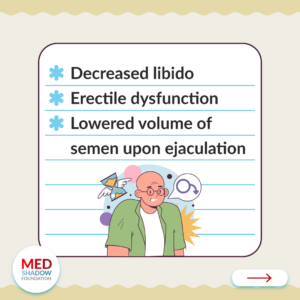
The most well-known and documented side effects of Propecia are reproductive in nature. The following side effects emerged during clinical trials and were included on the initial label:
- Decreased libido
- Erectile dysfunction
- Lowered volume of semen upon ejaculation
The drug is only approved for men, because animal studies showed a clear risk of the drug causing birth defects in a developing fetus.
After the drug was approved, there were reports of many other side effects. More studies are needed to tease apart whether all of them are related to the use of the drug, including:
- Breast tenderness and enlargement
- Depression
- Rashes and swelling
- Testicular pain
- Breast cancer
Of these, depression is one of the most worrying. Scientists showed that the drug does cross the blood-brain barrier, and, since the approval of Propecia, there have been several reports of patients experiencing mood changes and taking their own lives. The FDA added the risk of suicidal thoughts and behaviors to the drug’s label in 2022.
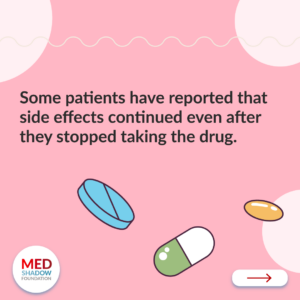
Some patients have reported that side effects continued even after they stopped taking the drug.
Does Propecia Lower Testosterone?
Propecia works by lowering DHT, which is made from testosterone. When you produce less DHT, you may actually end up with 25% higher levels of testosterone during the first 2-3 months of treatment, though after a few more months of taking the drug, your testosterone level will likely return to normal.
Side Effects of Propecia for Women
If you are able to get pregnant, you should take caution with finasteride. The FDA label suggests that women shouldn’t even handle broken pills, because exposure to finasteride can cause birth defects in the genitals of a developing male fetus.
Still, some small trials have begun testing the drug in women, provided that they are postmenopausal or they are using contraception. Those trials have yielded mixed results, with some showing the drug reduced hair loss and others suggesting it made no difference.
So far, the side effects of finasteride in women included:
- Lowered libido
- Acne
- Dry skin
- Elevated liver enzymes
Does Propecia Regrow Hair?
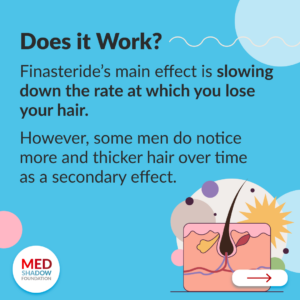
Finasteride’s main effect is slowing down the rate at which you lose your hair. However, some men do notice more and thicker hair over time.
“It is much better at maintaining hair than adding new hair,” Shani Francis, MD, director of the Hair Disorders Center for Excellence at University of Chicago, told MedShadow in an earlier article.
Mark Oreschnick started losing his hair in his early 30s, revealing a scar he’d had since childhood. Someone also offhandedly mentioned that he’d look so much younger with more hair, so when he saw a TV commercial for finasteride, he decided to give it a try.
“My hairline moved forward about half an inch, and more hair grew everywhere on my head,” he says. “I am still thinner than I would like to be on the top.” He’s been using the drug for about 15 years, and says he hasn’t noticed any side effects.
How Long Does Propecia Take to Work?
Those who use finasteride usually start to see results within the first six months. However, it’s important to know that you may need to continue taking the drug indefinitely. If you stop using finasteride, you will start losing your hair again.
Once people stop taking it, “they will lose all the hair they gained,” Francis says. “That can be frustrating.”






